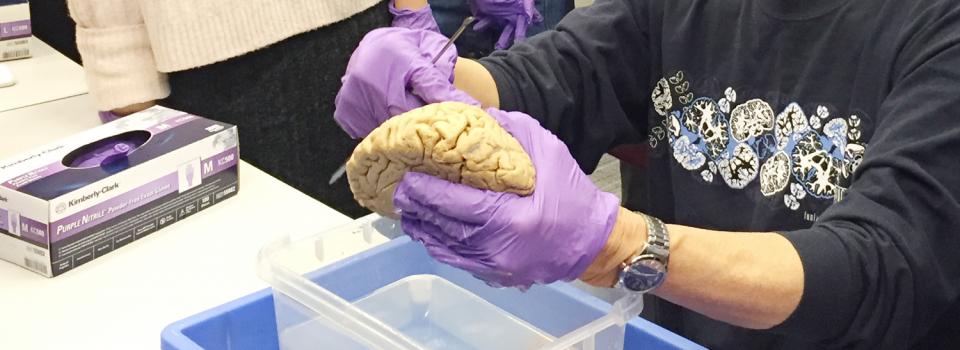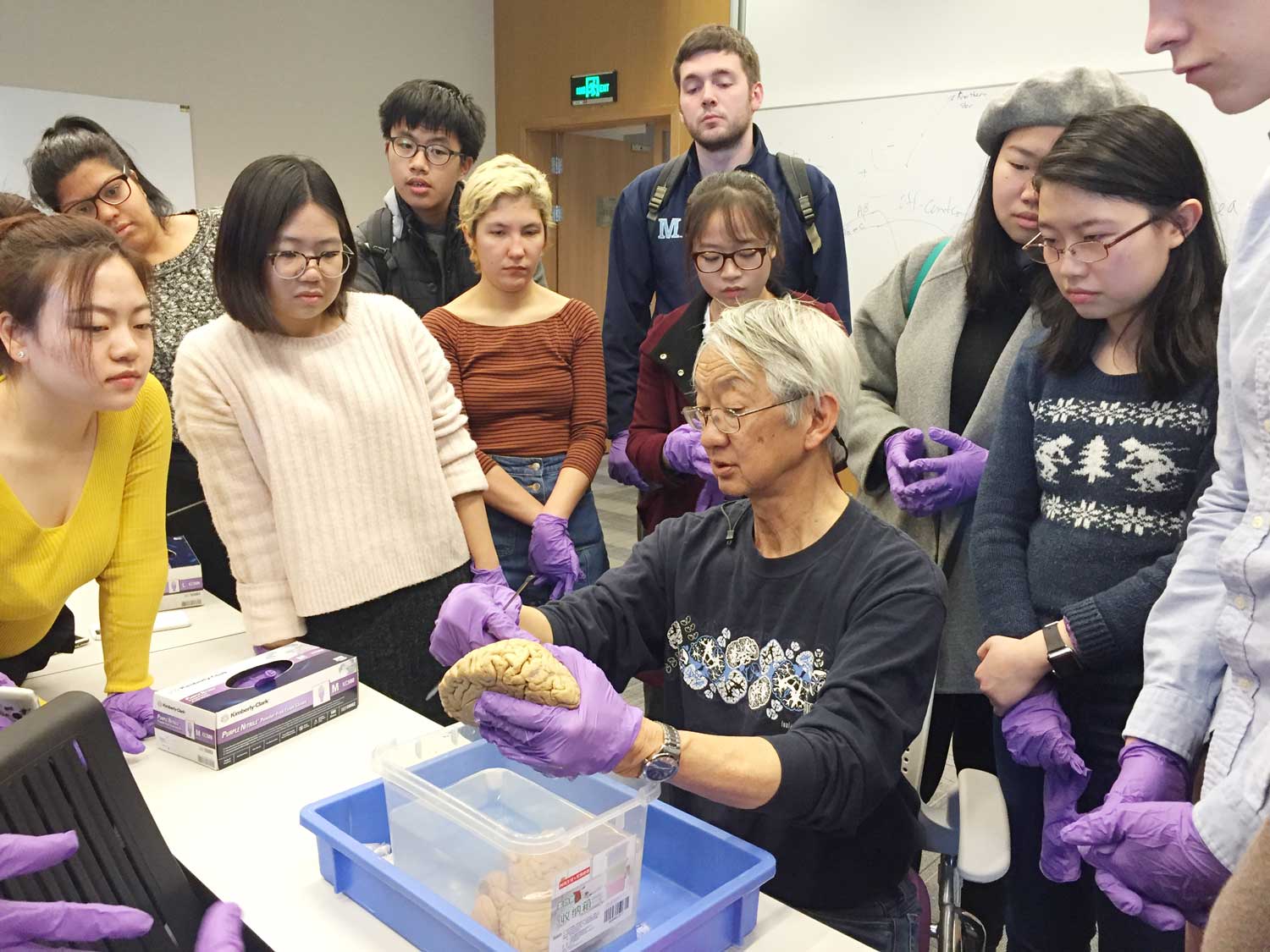Jun 12 2017
Published by
NYU Shanghai

Try recalling a moment when you were driving in a crowded street. Have you ever wondered why you were able to localize an approaching ambulance through its siren, and to spot a policeman via hearing his whistle?
The mechanism behind such seemingly innate abilities rarely occurs to us as a complex problem, but it is among the many mysteries that were unraveled in a neuroscience course at NYU Shanghai, named Special Topics on the Neurobiology of Hearing.
The course was given by Tom Yin, an established scholar in the area of auditory neuroscience. He is also a Professor Emeritus in the Department of Neuroscience at the University of Wisconsin-Madison. Yin taught at NYU Shanghai as a visiting professor during the semester of Spring 2017.
Brown eyed, silver haired, eyeglasses chained on the neck, and cough-relieving sugars on the podium. Standing at 5’7’’, Yin holds himself tall and gives an air of wisdom and tranquility. During the weekly 3-hour class session, he led the students to unfold the neural mechanisms of hearing, as well as to appreciate the beauty of the discovery.
“I think it is crucial to convey my own excitement to the students through teaching.” Said Yin. “And I tried to achieve that at NYU Shanghai.” Yin traced his own excitement for neuroscience back to the 1970s. As an electronic engineering graduate, he was fascinated by how neurons were able to generate responses to stimuli. “I found neuroscience quite late in my life, but it appealed to me immediately as something that I would like to pursue for my career.”
(Yin showing a human brain to the students, explaining different brain regions. The students also got a chance of handling the brain themselves.)
To convey this excitement to the young generations, Yin integrated his lectures with research findings from major journals. Key topics in auditory neuroscience, such as neural mechanisms of sound localization, auditory pathway, and neural processing of interaural time disparities and interaural level disparities were covered in the form of lectures through the first half of the classes, and the students were asked to read and present papers from the same topics in the second half.
“I showed videos. The students were fascinated by how single auditory-nerve fibers of the cat were studied in my lab, as well as how some other experiments they read from the textbook were conducted in the labs. ” Yin said.
In his classes, Yin always placed students in the center and tried to communicate scientific terms in the best way possible. “At first I wasn’t so sure if my base knowledge was good enough to survive such an advanced level neuroscience class.” Said Emira Sabanovic, a sophomore neuroscience-majored student at NYU Shanghai, “Later I am fascinated by Prof. Yin’s clarity and patience, which comes from years of teaching and his genuine love for teaching.” Emira thought she was inspired to learn more about the auditory system after taking the course.
Wrapping up his semester at NYU Shanghai, Yin had mixed feelings. “I came to NYU Shanghai by accident, but I have been impressed by the university; although I am not a fan of big cities, Shanghai has been enjoyable to live in. I will miss the pan-fried buns, friendly neighbors, and the chatty cab drivers here.” Said Yin.



